![]()
It’s been a long time standing controversy, and has been the cause for numerous infractions, warnings, and bans, in heated debates by users in the lab.gr’s forums. In addition, thousands of new PSU’s are sold, based solely on clever marketing promising unmatched stability in the heaviest of loads, and the ability to always deliver what is promised on the box!
The main purpose behind this article is the debate between using 6 or 8pin molex’s to power your graphics card/s, and whether in the end the 8pin can deliver power and stability that the 6pin can not. On the other hand skeptics often support that the 8pin molex, is nothing more than a marketing trick to fool the potential buyers to buy the PSU, and offers no additional benefits compared to its smaller sibling.
The debate heats up even more when 8pin enthusiasts support the superiority of the 8pin when over-clocking comes into play. And not unjustifiably so, since the ATX protocol clearly stands by them in this decision as you will see in the pages that follow.
Our task as you can now clearly understand is to transform ourselves into Adam Savage and Jamie Hynemann, assume our own Mythbusters role, and shed some light into all this clutter and confusion concerning the proper and recommended use of the 6 or 8pin molex.
The only thing we can promise is that you will be equally surprised as we did with the findings.
The ATX protocol at a glance
Lets move on to the nitty-gritty bit.
We will not go through the whole of the ATX protocol, but rather we will pick up specific bits and pieces that are directly related with the tests we are about to perform. In other words, the facts that the 6pin molex can offer up to 75W of power, whereas the 8pin can offer up to 150W.
The real life difference between the two offerings is that the 8pin molex, is effectively a 6pin with the addition of two extra groundings adjacent to it.
Historically the first graphics card to use an 8pin molex as its power supply was the ATI 2900 XT back in 2007.
The corporate statements from the two major GPU designers read as follows.
nVidia
ΠαράθεσηNVIDIA also advises against the use of 6-pin in 8-pin cards since many power supplies will not provide sufficient current over the 6-pin power cable. However, this type of setup could potentially support normal operation as long as the customer checks their PSU manuals and ensures that its 6-pin PCI-E rails can handle the same current rating as an 8-pin power cable, which is 150 watts.
In other words we can see that nvidia is tossing the ball at the PSU manufacturers, implying that many PSU’s have the specifications to handle the power required from an 8pin molex via a 6pin one but it is not always the case.
On the other hand the 8 pin agent provocateur (ATI) stands by its decision to use the 8 pin molex on its graphics cards, stating:
ATi
Παράθεση600 Watt or greater power supply is recommended with one 75W 6-pin and one 150W 8-pin PCI Express® power connector required (900 Watt and 2 6-pin and 2 8-pin connectors for ATI CrossFireX™ technology in dual mode)
It would be naïve to say the least, to expect ATI to support anything else considering the fact that they first used the 8 pin molex as a means to extra power and stability on their cards, and they are making a clear distinction between the two molex’s and the stability they can offer.
Equipment & Testing Methodology
Once more our “load tester” will be our “angel of deliverance” for this presentation.
Without it, it would be impossible to conduct the tests in all the circumstances we wanted, and take proper readings and observations, so as to arrive to a proper conclusion.
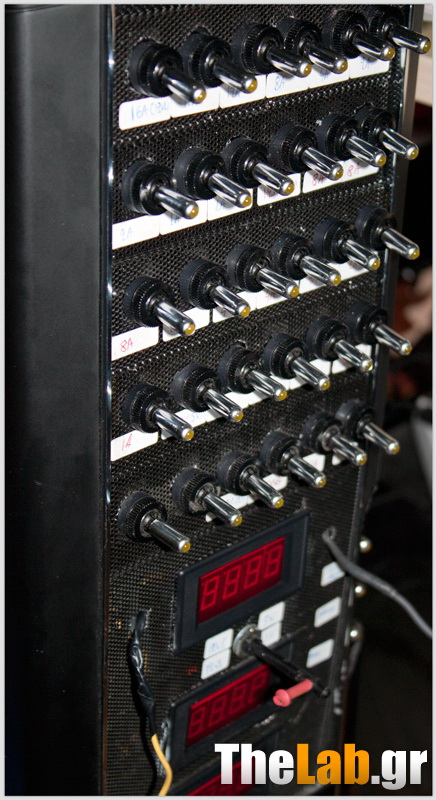
The first one is the 1500W beast by SilverStone, under the code name ST1500 that was selected based on the amount of raw amperage it can supply, and the second PSU is the Seasonic X-750, with a nominal output (as the name implies) of 750W, selected as a contender representing the more mainstream portion of the market, and something that more users will be able to relate to.


The testing methodology was pretty straight forward.
The only thing we wanted to test is whether or not the 6 pin molex can safely deliver the 150 watts that the 8 pin is giving by default, with no voltage drops, or other voltage fluctuations.
But being as thorough as we are on every test we went a step further, and even tried to draw out 180 Watts from every cable combination in order to stretch the molex’s capabilities to the very limit. The cable combinations tested are: a native 6pin, a native 8pin, and a split 6+2pin that were tested so as to deduct as safe and correct results as possible.
Test Results - Seasonic X-750
Down with it then!
We begin with the smaller of the two siblings, the Seasonic X-750, but before we proceed we need to take into account two things. First this PSU has no native 8 pin molex’s but rather uses split 6+2pin, and the second, this PSU uses AWG18 thick cables.
We did as mentioned 4 tests with the X-750. Two with the 6pin molex, drawing 150 & 180W, and two more with the 6+2pin molex, once again drawing 150 & 180W. Lets take a loot at the results:
| Seasonic X-750 | ||||
| Test # | 12V (Amps) | 12V (Volts) | Total DC Watts | Pass/Fail |
| 6 pin from 6+2pin @ 150W | 12.338 | 12.063 | 148.77 | Pass |
| 6 pin from 6+2pin @ 180W | 15.030 | 12.032 | 180.70 | Pass |
| 8 pin from 6+2pin @ 150W | 12.338 | 11.951 | 147.63 | Pass |
| 8 pin from 6+2pin @ 180W | 15.030 | 11.891 | 178.64 | Pass |
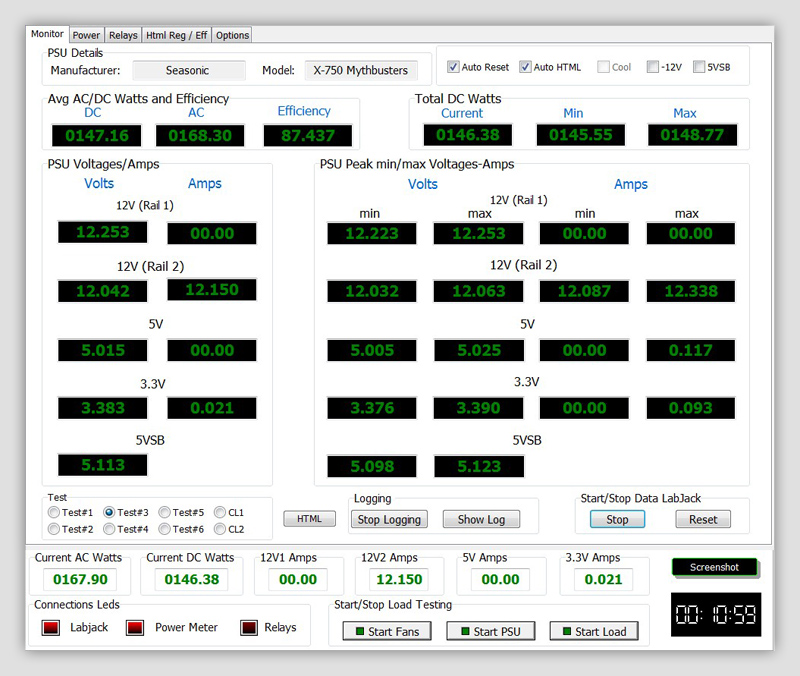
6-pin - 150 Watts
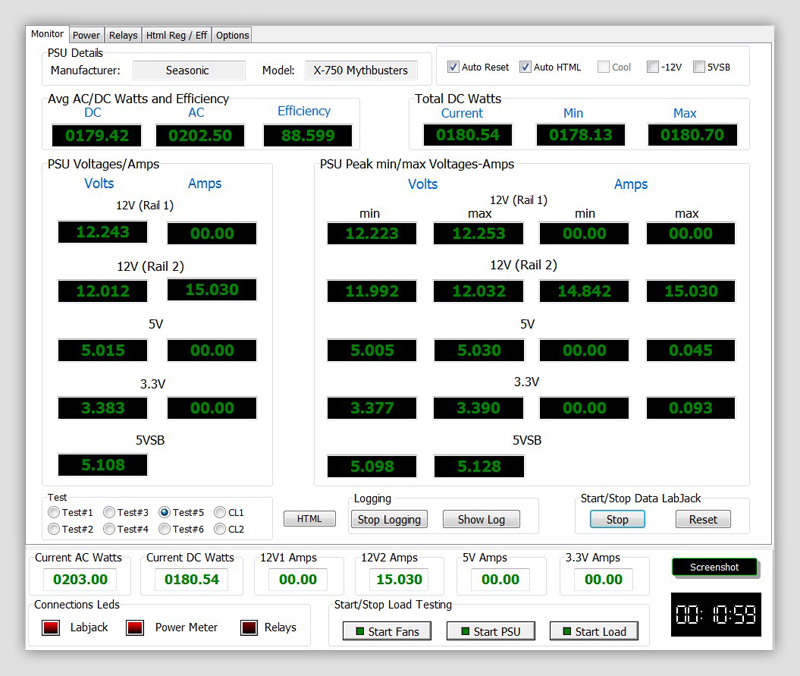
6-pin - 180 Watts
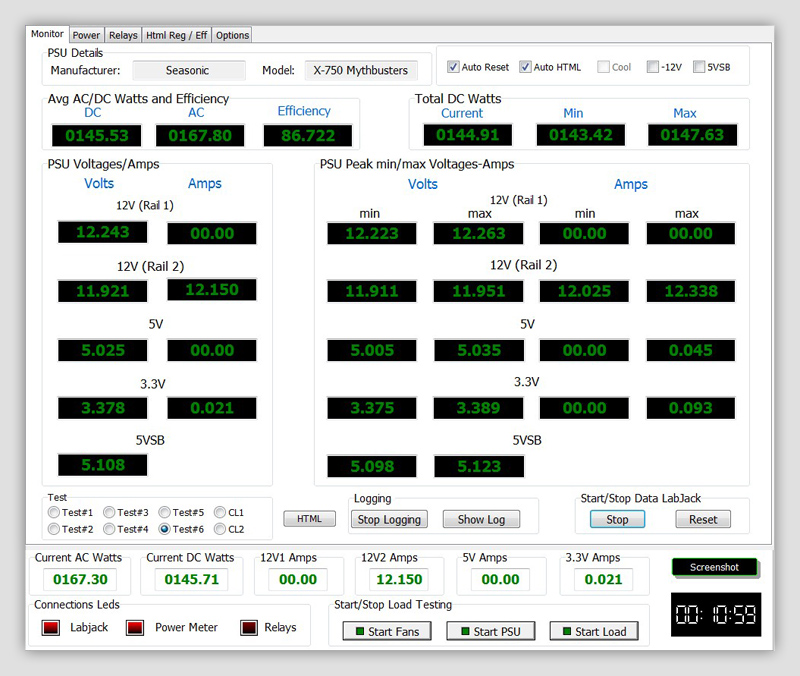
8-pin - 150 Watts
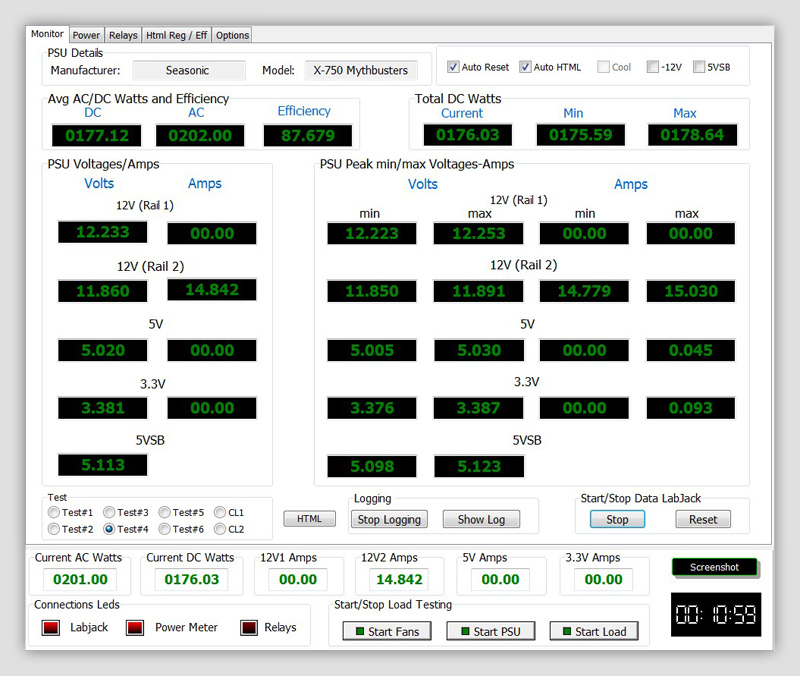
8-pin - 180 Watts
At first glance it appears that the numbers have been miswritten and appear upside down. But this is not the case, as it turns out after double and triple checking. The X-750 did not even flinch when asked to deliver the required loads, but on top of that we noticed a smaller voltage drop when we used the 6 pin molex instead of the 8 pin! This is very odd indeed. At the same time all the voltages were well within the ATX specifications, and no issue rose whatsoever. Another noteworthy find is that the temperature of the cables did not record (via hand testing) any noticeable rise in temperature, hence showing that the stress was within limits of the PSU. In other words, the X-750 can easily replace an 8pin with 6pin molex… Quite impressive!
Test Results - SilverStone ST1500
Up next is the SilverStone power plant. This PSU comes with AWG16 thickness cables, and has native 6pin and 6+2pin connectors.
In total 6 readings were taken from the ST1500. Two using the native 6pin drawing 150 & 180W, two using the native 6+2pin molex (as a 6 pin) and drawing 150 & 180W, and further two using the 6+2pin molex, as an 8 pin and once again drawing 150 & 180W.
The reason behind the last 4 readings is to check if there exist any differences between native 6 pin and native 6+2pin molex’s.
Bellow you can see the results.
| Silverstone ST1500 | ||||
| Test # | 12V (Amps) | 12V (Volts) | Total DC Watts | Pass/Fail |
| 6 pin @ 150W | 12.828 | 11.881 | 153.04 | Pass |
| 6 pin @ 180W | 15.457 | 11.850 | 183.32 | Pass |
| 6 pin from 6+2pin @ 150W | 12.953 | 11.931 | 155.12 | Pass |
| 6 pin from 6+2pin @ 180W | 15.645 | 11.901 | 186.19 | Pass |
| 8 pin from 6+2pin @ 150W | 13.015 | 11.891 | 154.56 | Pass |
| 8 pin from 6+2pin @ 180W | 15.457 | 11.769 | 182.46 | Pass |
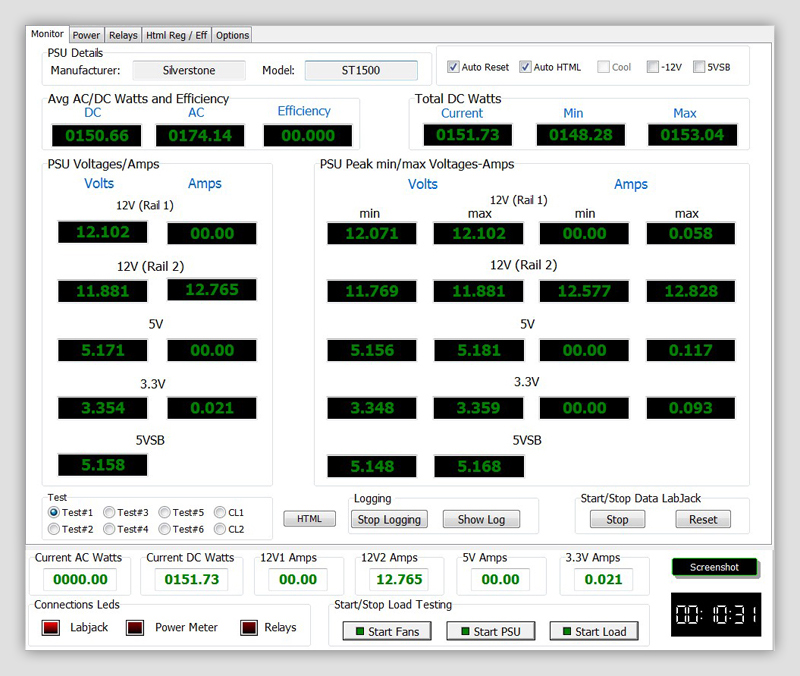
6-pin - 150 Watts
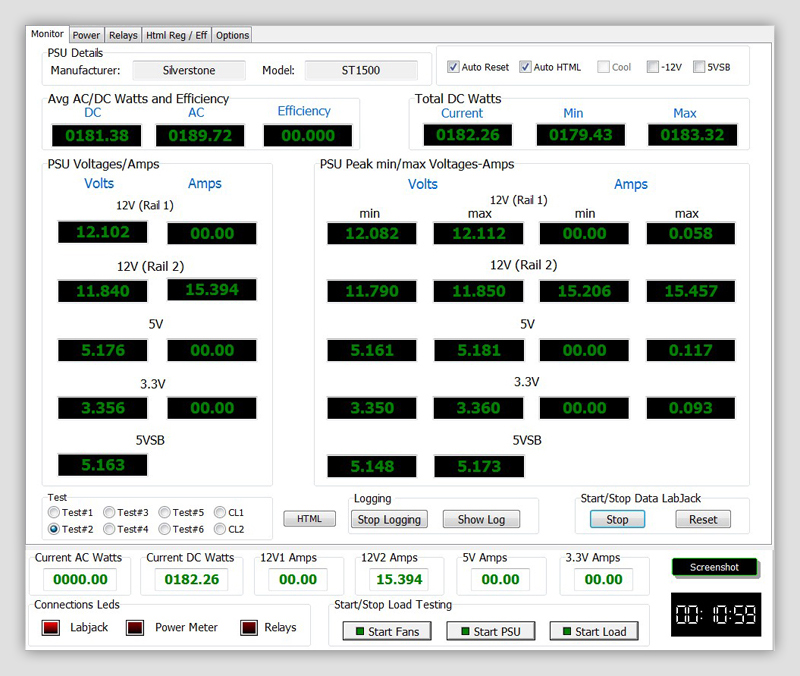
6-pin - 180 Watts
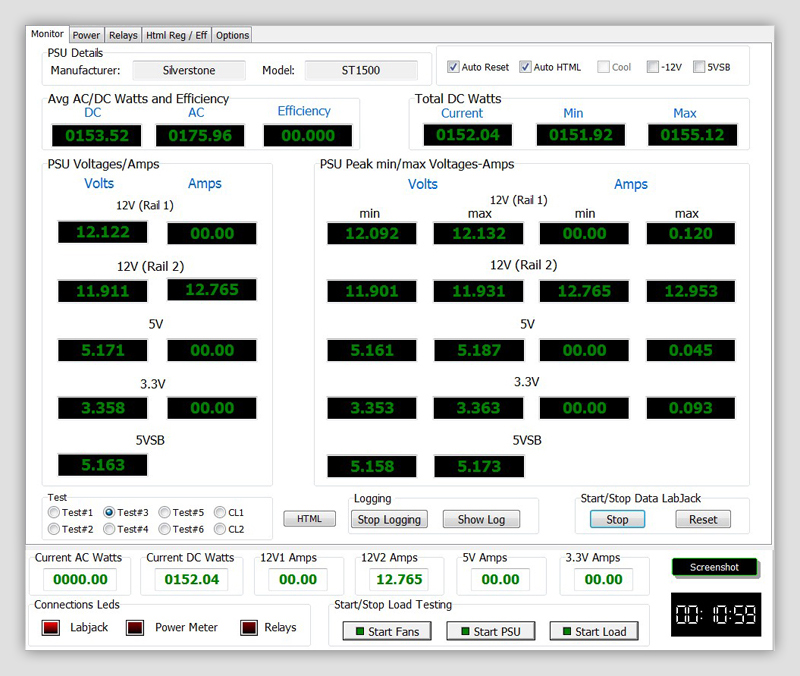
6-pin απο το 6+2-pin - 150 Watts
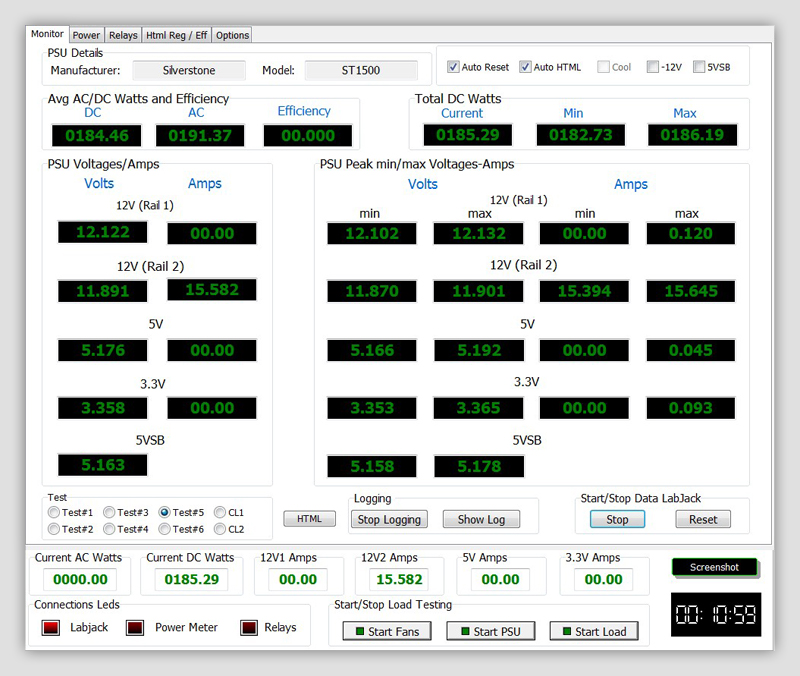
6-pin απο το 6+2-pin - 180 Watts
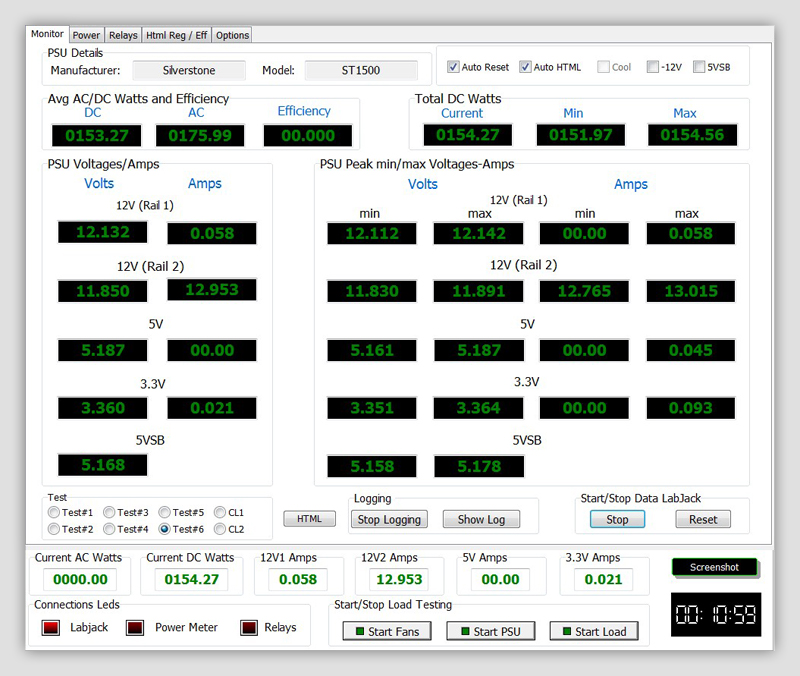
8-pin απο το 6+2-pin - 150 Watts
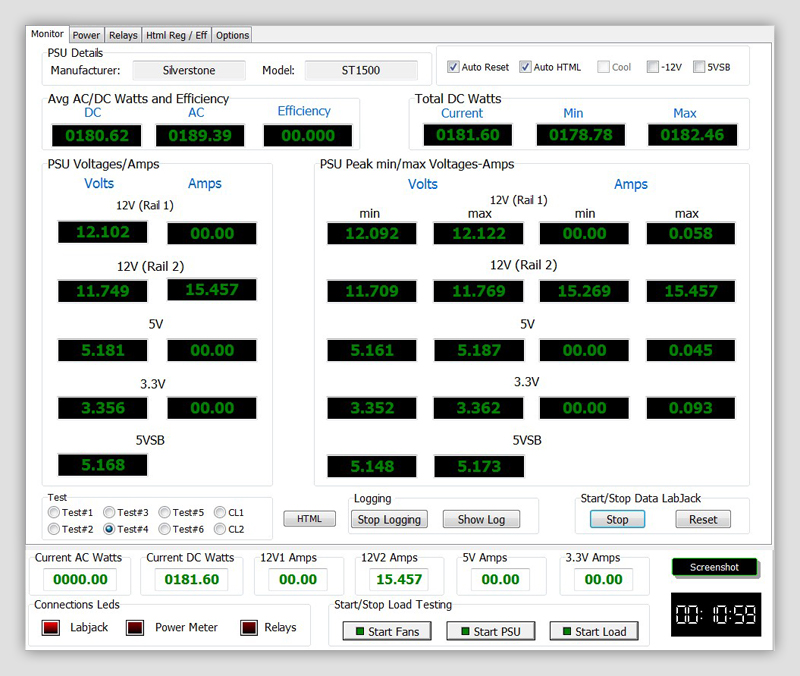
8-pin απο το 6+2-pin - 180 Watts
Once more it seems like history is repeating itself with the SilverStone PSU. The most solid and close to 12V currents came by the combination of using the 6pin molex of the 6+2pin. Followed closely by the native 6pin, and last the 6+2pin used as an 8pin. To be perfectly honest I was expecting the opposite results… In any case we never saw the PSU wandering off the ±5% dictated by the ATX protocol, and neither here we had any cable temperature increase.
Epilogue

|

|
We started off this presentation with a clear goal. To investigate if there are/exist (and if so, how big are they) and differences between the two paths of powering your graphics card. The 6pin and 8pin molex. On paper the 8pin wins hands down, being designed to deliver vast amounts of amperage with rock stable voltages. But what happens in real life scenarios?
As we deducted in the course of our experiments, and using the two aforementioned PSU’s as our test-bed, there are no differences worth writing home about.
We did use two above average PSU’s in both performance and monetary terms, but the results are however reflected on tests run on both.
The most solid conclusion of our experiments is that a good quality PSU can easily deliver, via its 6pin molex, not only the 150W that the 8pin adversary can give, but even more (180W) without breaking a sweat.
We will however ill-advise the use of the 6pin connector as a replacement of the 8pin, unless you are absolutely sure about the quality of your PSU.

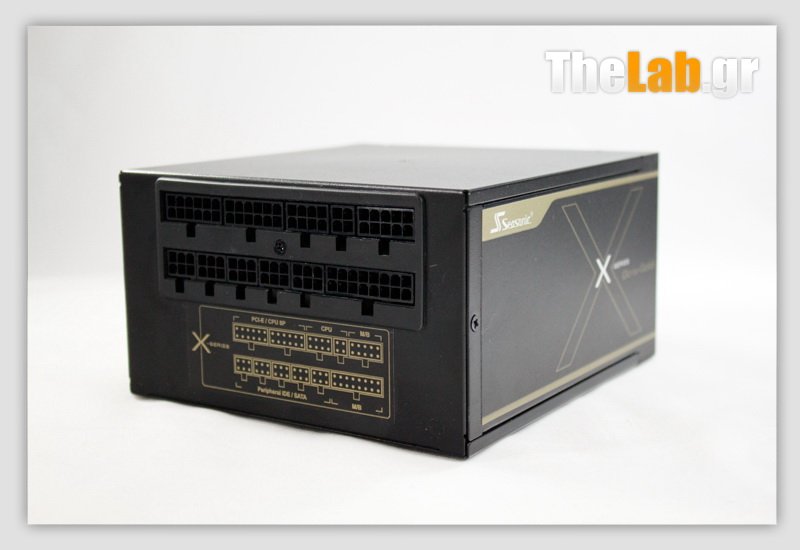





Recommended Comments
There are no comments to display.
Create an account or sign in to comment
You need to be a member in order to leave a comment
Create an account
Sign up for a new account in our community. It's easy!
Register a new accountSign in
Already have an account? Sign in here.
Sign In Now